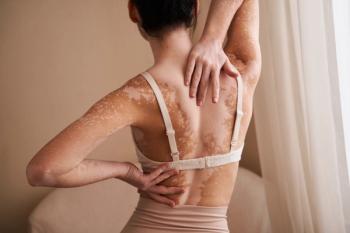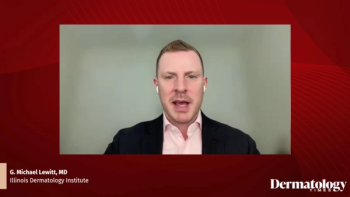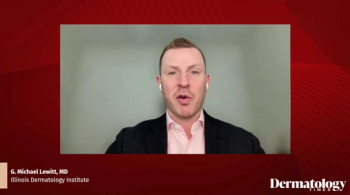
Vitiligo Linked to Insomnia Risk
A new study showed about half of all vitiligo patients from a care system were burdened with the sleeping disorder.
Insomnia is highly prevalent in patients with
In new case-control study data from China, a team of investigators reported that approximately half of all observed patients with vitiligo surveyed via online questionnaire also suffered from insomnia. The findings emphasize the need for wellbeing assessments conducted by dermatologists, as well as care plans that emphasize individual burdens beyond the skin condition.
The team, led by Jia-Wei Liu of the Department of Dermatology at Peking Union Medical College Hospital, conducted the trial to evaluate prevalence, severity, and risk factors of insomnia in patients with diagnosed vitiligo.
As they noted, the disfiguration-causing skin condition has been commonly associated with impaired social function and physiological disorders including depression, stress, and insomnia.
“In the meantime, various autoimmune diseases are associated with sleep disorders,” they wrote. “Patients with sleep disorders may suffer the potential risk for vitiligo. Therefore, a bidirectional relationship exists between vitiligo and sleep disorders.”
Vitiligo onset may be a causal trigger for sleeping disorders, Liu and colleagues noted, or sleeping disorders may induce or worsen cases of vitiligo.
Their telesurvey case-control assessment was conducted in March 2021, via an online questionnaire sent to 762 adult patients with vitiligo. The questionnaire included a survey on patient baseline information, as well as a 45-item sleep-related instrument.
Vitiligo activity was evaluated via 6-point Vitiligo Disease Activity (VIDA) score assessment. The sleep-related instrument helped define insomnia by diagnosis; Insomnia Severity Index (ISI) score; specific insomnia type; instruments and history requisition to exclude other sleep disorders; and specific disturbance faces.
Liu and colleagues included 409 total patients with vitiligo. Mean patient age was 30.0 years old, with 56.0% being female. Nearly half (48.7%) of observed patients had vitiligo for ≥3 years.
A total of 204 (49.9%) patients had experienced insomnia, with 114 (55.9%) of those patients experiencing a form of the adjustment sleep disorder caused by their vitiligo. Another 81 (71.1%) reported development, aggravation, or recurrence of vitiligo as the first reason for their insomnia.
Investigators observed significant differences in age among vitiligo patients with insomnia and those without (32.1 vs 27.9, respectively; P< .001). Patients with vitiligo and insomnia were more likely to be female (62.8%; P = .006), work in urban areas (77.0%; P = .017), experience vitiligo in their face and neck (67.2%; P <.001). Patients with both conditions were also more likely to receive oral corticosteroids for their vitiligo and suffer from depression than those with lone vitiligo.
In adjusting for baseline demographics, investigators observed face and neck vitiligo (OR, 2.62; P = .032), vitiligo progression (OR, 2.50; P= .002), and oral corticosteroid use (OR, 2.71; P = .021) to be significant risk factors for insomnia in patients with vitiligo.
Liu and colleagues observed that the present study demonstrated the very prevalent risk of insomnia in their vitiligo patient population.
“Seemingly, this sleep problem affected their quality of life by a psychopathological condition such as depression and stress,” they wrote. “Therefore, it may be significant for dermatologists to have general identification of these conditions in vitiligo patients, both psychological and physical, and offer individualized therapy.”
Though no previous relevant research has observed insomnia treatment’s association with vitiligo disease control, the investigators theorized that improved sleep quality may positively influence their patients’ skin condition.
“Of note, different patients with vitiligo have specific worries about this disease and problems,” they concluded. “Dermatologists should identify them carefully, especially humanistic factors in social life, and perform individualized ‘non-drug’ treatment.”
The study, “
This article was initially published by our sister publication
Newsletter
Like what you’re reading? Subscribe to Dermatology Times for weekly updates on therapies, innovations, and real-world practice tips.


















